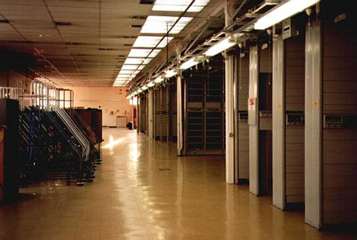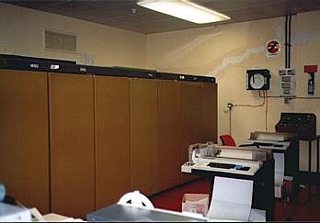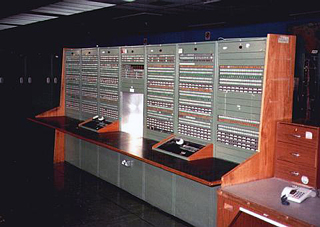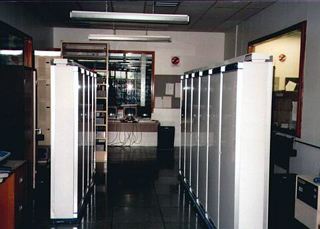 |
The Ericsson ARM20 crossbar (TXK5), which was installed at Stag Lane, was named Mollison, there were also models of both at the training centre. This ARM 20 was the largest in the world and consisted of four separate switches... |
Bob Outram recalls...
"The Ericsson ARM20 crossbar (TXK5), which was installed at Stag Lane, was named Mollison, there were also models of both at the training centre.
This ARM 20 was the largest in the world and consisted of four separate switches. Two were used for incoming traffic and two for outgoing. These were know as Twin A and Twin B in each unit and each twin could access ports on its twin via interconnecting links. The Route Marker (RM) on one twin knew if there was available circuits on the other.
This was the first time BT had contracted a non-British core switch, however, the contract was with Thorn Ericsson's which was 51% Thorn and consequently had the governments blessing. Ericsson's British venture started there!"
The IATAE (International Accounting and Traffic Analysis Equipment)
At Mollison the equipment only processed international call accounting information. And although it did NOT monitor traffic or process fault information, it was still (perhaps incorrectly) referred to as an IATAE.
 |
The International Accounting and Traffic Analysis Equipment (IATAE) |
 |
The International Accounting and Traffic Analysis Equipment (IATAE) |
ISMC - International Switching Maintenance Centre for TXK5s
|
 |
Mollison International Maintenance Centre (IMC) |
 |
The ISMC had an Electronic Traffic Recorder (MET2). This was later replaced by an OMT. |
ITMC - International Transmission Maintenance Centre for TXK5s
|
 |
The portable exchange testers: |
The Mollison TXK5 had an entirely different atmosphere to the De Havilland TXK2 exchanges. The relay sets were in metal cans, similar in a way to Strowger technology, while the switches had glass at the front of their covers. The Route Markers and Markers were all centralised in suites, so this area of the exchange was very noisy in the busy hour. You could tell from the sound that a Route Marker made whether the call had been successfully switched across the exchange. I got very familiar with the portable Exchange Testers while doing the System Appraisal tests at Mollison. So that we could work uninterrupted by the continuing commissioning work, these tests were done overnight. We did find a few design faults which Ericsson rectified of course, though most design issues had been sorted much earlier through Ericsson providing a test model of TXK5 (without any switches) in the circuit lab in Armour House in 1973. I arranged for circuits to be brought in from every conceivable kind of exchange type to prove interworking. During these tests, I even found some flaws in the design of Strowger GSC equipment which would have made them vulnerable to the "phone freaks".
All logos and trade marks are the property of their respective owners and are used on the Light Straw site(s) for review only. Students and researchers are recommended to make their own independent enquiries as to the accuracy of the information contained therein.